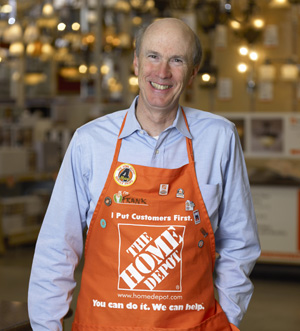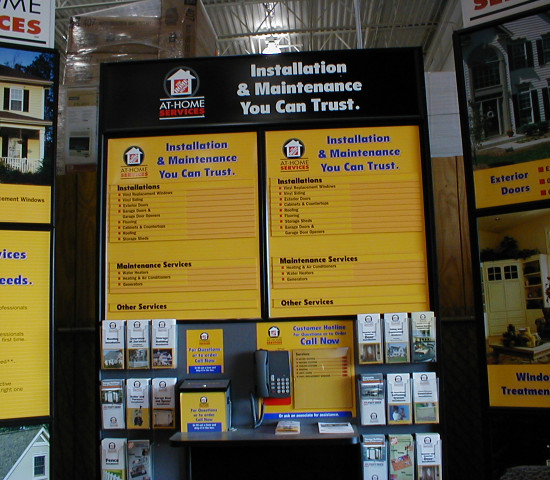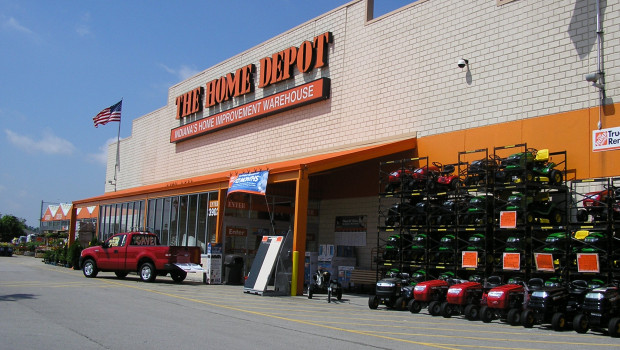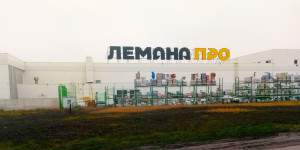A busy front aisle in a typical Depot unit.
The recession caused sales to drop, obviously. Sales last year were $66.2 billion, down 7.2 per cent from $71.3 billion achieved the year before. However, thanks to actions Blake and his team took, net earnings actually increased a most impressive 17 per cent from $2.3 billion to $2.7 billion. Management also increased after-tax return on invested capital to 10.7 per cent, up from 9.5 per cent the previous year.
Here is a closer look at Home Depot today as it continues its resurgence:
It operated 1,976 stores in the U. S., Puerto Rico and the U. S. Virgin Islands and Guam. It opened only 5 new stores last year, a sharp reduction from previous years.
It operated 179 stores in Canada, and opened only 3 new ones last year.
In Mexico, it opened 5 new stores, giving it a total of 79 units there.
It closed two stores in China, ending the year with 10 units in 4 cities.
It generated $7 billion in international sales, which would make it the third largest home center chain in Europe, though international sales slipped slightly from $7.4 billion.
Average sales-per-store chainwide were $29.5 million, down 6.6 per cent from the previous year. Sales-per-square-foot averaged $278.97 last year.
Average transaction size also slipped about the same amount - 6.3 per cent - to $51.65.
Store size remained fairly constant, averaging slightly more than 9 700 m². Its first three stores in Atlanta, taking over defunct discount locations, averaged 5 600 m². (Its average store size is somewhat less than that of Lowe's, its major competitor and much smaller than that of privately-owned Menards in the Midwest).
However, while management trimmed inventory 4.5 per cent, it was unable to cut it enough to match declining sales.
Last year was a busy management year for Blake and his team. hey opened 13 new stores, closed the two in China and got rid of 41 other units by closing out its entire Expo division, THD Design Centers, Yardbirds and HD Bath Business. Earlier, it had sold majority interest in the HD Supply division Nardelli had established. By closing the 41 units last year, the company is now focusing on the original concept of a chain of warehouse home centers as founded by Bernie Marcus and Arthur Blank, with no distractions from other phases of hardlines distribution.
CEO Frank Blake, who is responsible for Home Depot's resurgence.
Blake's team also took a hard look at Home Depot units and closed 15 under-performing units.
Blake has been a busy man. He's in process of reshaping how the company gets its merchandise and supplies its stores. Whereas originally the stores primarily were supplied by direct shipments from factories, gradually it built up a network of 188 various kinds of warehouses and distribution centers in 33 states or provinces. They averaged only 16 000 m², quite a bit smaller than most highly efficient distribution centers being operated by other retailers or wholesalers today. The older ones that were closed represented 223 000 m² of warehouse space.
Among the 188 warehouses, 30 handled lumber, 36 were conventional distribution centers and 2 served as transit facilities for stores in the U. S., Canada and Mexico.
Blake's new distribution system is based on developing a series of Rapid Deployment Centers (RDCs), which will be able to more quickly and efficiently keep individual retail stores supplied. The company added 7 RDCs in 2009, giving the firm a total of 12, which are now serving 1,250 stores (65 per cent of its total.) The goal is to have all 1,900+ US stores served by these RDCs so more are being built.
The Home Depot of today, however, is not quite the same as the chain built up by Marcus and Blank. For one thing, its gross margins are considerably higher. Instead of being in the mid to high 20s, last year gross margin increased to 33.9 per cent, up from 33.7 per cent last year and 33.6 per cent in 2007. Pre-tax net profit was 6 per cent.
Considering that the store sells lumber and other building materials at much lower margins, as well as a sizeable chunk of lower-margined major appliance sales, this means that the retails for many smaller items are not nearly as competitive as they used to be.
However, retailers competing with Home Depot know that the company continues to be a master at creating a hot-price image by carefully selecting and featuring red hot prices on some items. In fact, recently some hardware retailers said they were able to buy some items at retail from Home Depot cheaper than they could be supplied by their major wholesaler.
While Blake and his team were busy closing divisions and revamping its distribution system, they simultaneously were focusing on trying to restore the company's customer service, which had suffered from Nardelli's decision to cut back on full-time help and rely more on part-timers. That policy was quickly reversed and Blake's team is spending more time and effort on training people, in many cases bringing in the kinds of specialists Marcus and Blank employed to provide customers superior service. Today 61 per cent of its 317 000 employees are once again full-timers.
Installation services are offered, too.
They've also been trying to help customers conserve energy, and have identified about 4,000 products for energy and water conservation, etc. They also are spending money ($22 million) on energy-efficient projects within the stores, and claim to have saved 114 million kilowatt hours in operational expenses compared to 2008. This represents a 16 per cent reduction in expense since 2004. The goal is to cut energy use by 20 per cent by 2015.
Additionally, in-store customer clinics are featuring "green§ DIY projects, and an Eco Options page on the company's web site also provides consumers with "green" help.
What all this amounts to is a company that once again is an active industry competitor.



 Menü
Menü

















